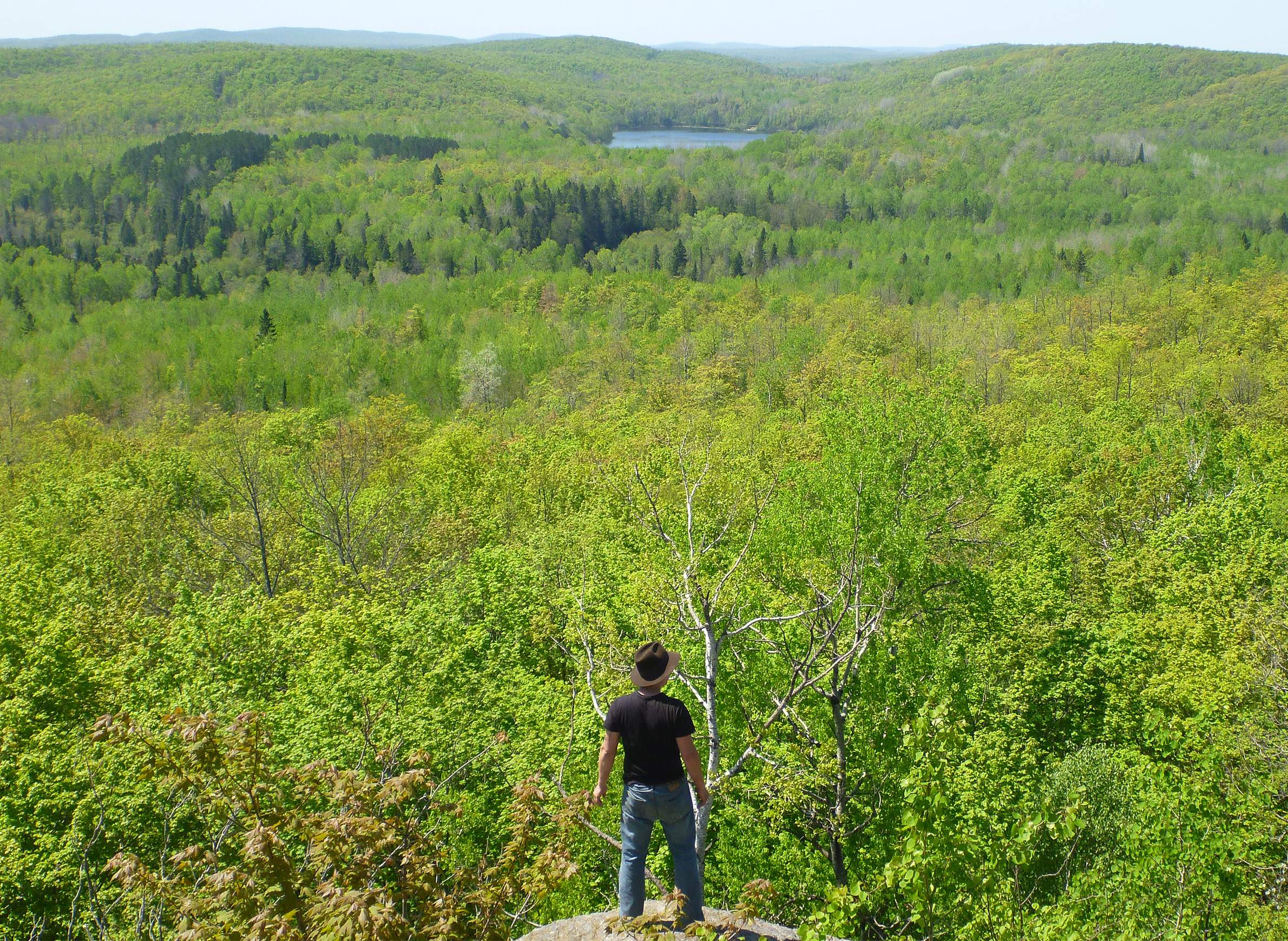
Corrigan's Lookout, off of Highway 122 near Saxon, offers a sweeping view of the Penokees.

Corrigan's Lookout, off of Highway 122 near Saxon, offers a sweeping view of the Penokees.
In a state where the landscape tends towards low-lying swamps, flat fields and rolling hills, northern Wisconsin's Penokee Range of mountains are a dramatic outlier. Though their elevation is relatively modest — the Penokees are often just called hills — the range stands out. Billions of years of geologic processes, a cataclysmic meteor impact and changes in Earth's atmosphere all contributed to shaping a land with striking visual and physical properties.
The Penokees consist of two elevated ridges that run about 50 miles through Ashland and Iron counties, and continue on for about another 50 miles in the Upper Peninsula of Michigan, where they're referred to as the Gogebic Range. Like seven similar outcrops around Lake Superior, the Penokee-Gogebic Range has plentiful deposits of iron and other minerals.
In 2011, this fascinating geology collided with environmental concerns and renewed a statewide debate over mining. A company called Gogebic Taconite began seeking approval from the Wisconsin Department of Natural Resources to open a new iron ore mine in the Penokees. After a long and politically contentious process that saw the company helping legislators craft a new iron mining bill, with Wisconsin's Native American tribes and environmental advocates sounding alarms about the proposed mine's impact on water quality, Gogebic Taconite backed out, citing concerns about federal wetland regulations.
Tom Fitz, an associate professor of geoscience at Northland College, was involved in the mining debate, noting the presence of small asbestos-like fibers in the Penokees that could damage people's lungs if disturbed. However, Fitz has been studying the range since long before the Gogebic Taconite controversy, and thinks about its geology in terms of a much longer time scale.
In a July 27, 2016, talk hosted by the Lafayette County 4-H club, recorded for Wisconsin Public Television's University Place, Fitz delved into how the Penokees — "some of the oldest rocks in Wisconsin" — took shape. He explored the processes that formed the complex layers of rock making up the range, detailed the benefits the region provides, and discussed the difficulty of balancing different human and environmental needs.
Fitz pointed out a lot of the beauty simply present in the region's geology. He even once collaborated with a photographer on an artistic photo series inspired by the rocks of the Penokees. Taken with how vividly the region's geology illustrates the history of Earth, Fitz said, "it is also beautiful in itself, just to see it."
Key facts
Key quotes